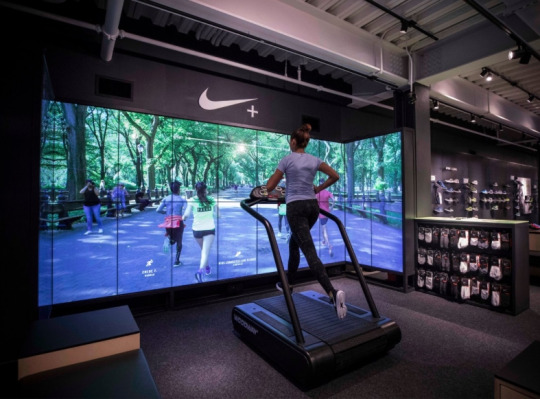
Experiential retail has been a hot industry buzzword in
recent years, as brick-and-mortar stores scramble to find ways to drive
traffic, whether in the form of events, entertainment or even technology-based
experiences in VR and AR. But a successful experience is one that
remains consistent with the brand’s values, and also is designed not just to
drive shoppers into a store but also to encourage them to buy (either during
the event, at a later visit or online).
Betabrand’s recent introduction of a weekly “Podcast
Theater” in its San Francisco store that
hosts podcasts in front of a live audience demonstrates one of the ways
retailers can go outside the box to attract consumers. But the question remains:
is it too far outside the box?
The RTP team discusses what makes experiential retail initiatives
an effective brick-and-mortar strategy, and shares whether they believe the
“Podcast Theater” will deliver positive results for Betabrand.
Adam Blair, Editor: You wouldn’t think people
would flock to a retail store just to sit and watch people talk into
microphones (although if old movies are to be believed, radio shows once played
to live studio audiences, in the Department of Everything-Old-Is-New-Again).
But hats off to Betabrand for drawing three to four times their
normal weeknight crowd to their San Francisco store by hosting podcast tapings.
I’m not totally sure this counts as “experiential retail” so much as
“advertising/promotion aligned with the store’s yoga-pants-selling vibe,” but
I’m probably being too picky. Building awareness — particularly among a group
of people who are either current or likely customers — is a Retailing 101
basic. And in-store retailing is, at its heart, about bringing people together
into a community. I do hope that at some point, somebody attending
the tapings buys something from Betabrand. I’m sure at least a
few of them do.
Glenn Taylor, Senior Editor: I’ll admit that the
Betabrand story did catch my eye, on the grounds that it was simply something I
hadn’t seen before. If there’s one thing about retail that a lot of companies
fail to do effectively, it’s standing out. I bet there are A/V equipment
retailers or even a retailer like Barnes & Noble that wished they
had done something like this first, especially given that B&N would have had
the cachet to bring in bigger names and draw bigger crowds. Experiential retail
decisions like this can seem gimmicky, but if the store’s merchandise gets
solid promotion, I see this being a win. If anything, experiences like this can
go a long way toward establishing a community, which today is just as
important in building brand identity as any other factor. One note about
community-building: I think location is a very underdiscussed (at least in
analyst circles) subject. The reason why modern, successful malls are changing
into “experience centers” is because today’s shoppers need more than products
and a dingy food court to be satisfied with their shopping trips. Strip malls
are no different. Ideally, they are located in well-traveled areas. Even if the
stores within them don’t carry an extensive product line, if they provide an
interesting experience, they would still be near enough to other
businesses/theaters/gyms to attract an overflow of curious potential shoppers.
It’s much easier to pull off events in locations with a bunch of people walking
through the town center than trying to do the same thing in a fading C-class
mall.
Bryan Wassel, Associate Editor: The beauty of
experiential retail is that anything can be an experience, and as pop-ups and
in-store celebrations become ho-hum, I expect retailers looking to catch the
eye of busy shoppers to get more esoteric. Book signings and celebrity
appearances were mainstreamed decades ago, and even more “modern” experiential
draws risk becoming commonplace. On the other hand, smart retailers know that
the events themselves are only part of their value: they are also about
building awareness via media coverage and social media buzz. Because no one has
tried taping a podcast in a store before, people looking for something
one-of-a-kind, or at least new, will turn to this sort of experience — at least
for now. In a couple of weeks that, too, will be old news, and retailers like
Betabrand will need to roll out new and fascinating experiential programs to
get feet into their stores.






